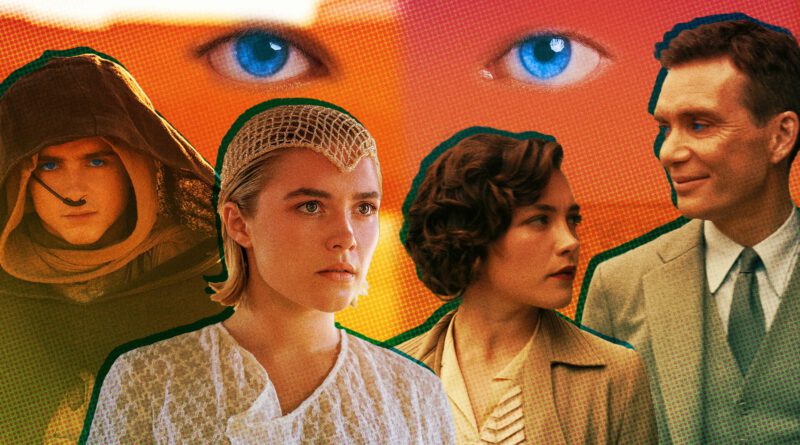Are ‘Oppenheimer’ and ‘Dune’ the same movie?
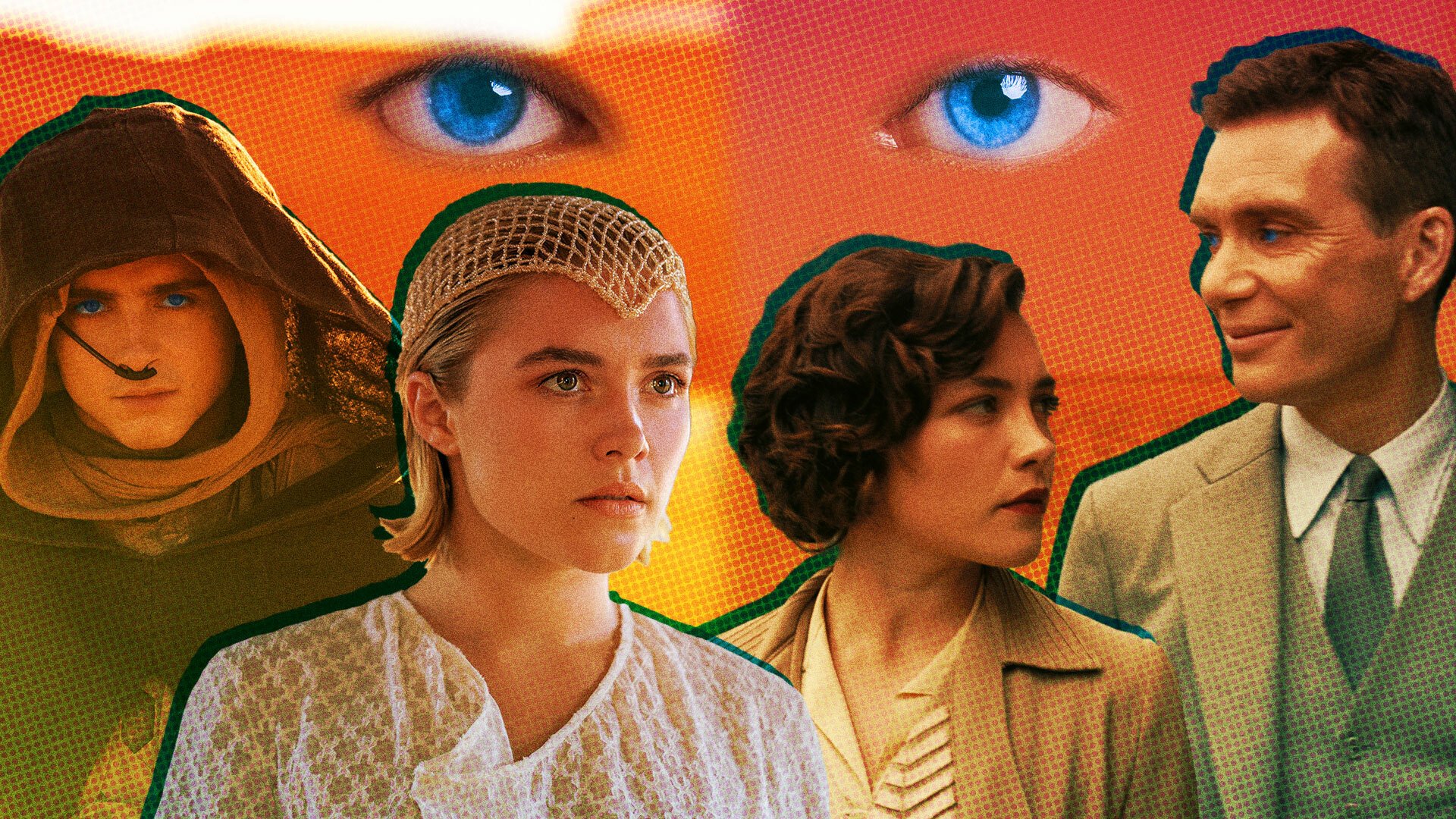
I love Christopher Nolan’s Oppenheimer. I love Denis Villeneuve’s Dune. In fact, I have a sneaking suspicion that I love them both so much because they’re the same movie.
“But how can that be?” you may ask. “After all, Dune is a science-fiction epic. Oppenheimer is based on the real life of physicist J. Robert Oppenheimer. What could they possibly have in common?”
Turns out, several themes and aesthetic choices! From two directors with whose styles complement each other to the talents of Florence Pugh, the Dune series and Oppenheimer are more similar than you might think. Let’s break it down.
Christopher Nolan and Denis Villeneuve’s careers speak to each other.
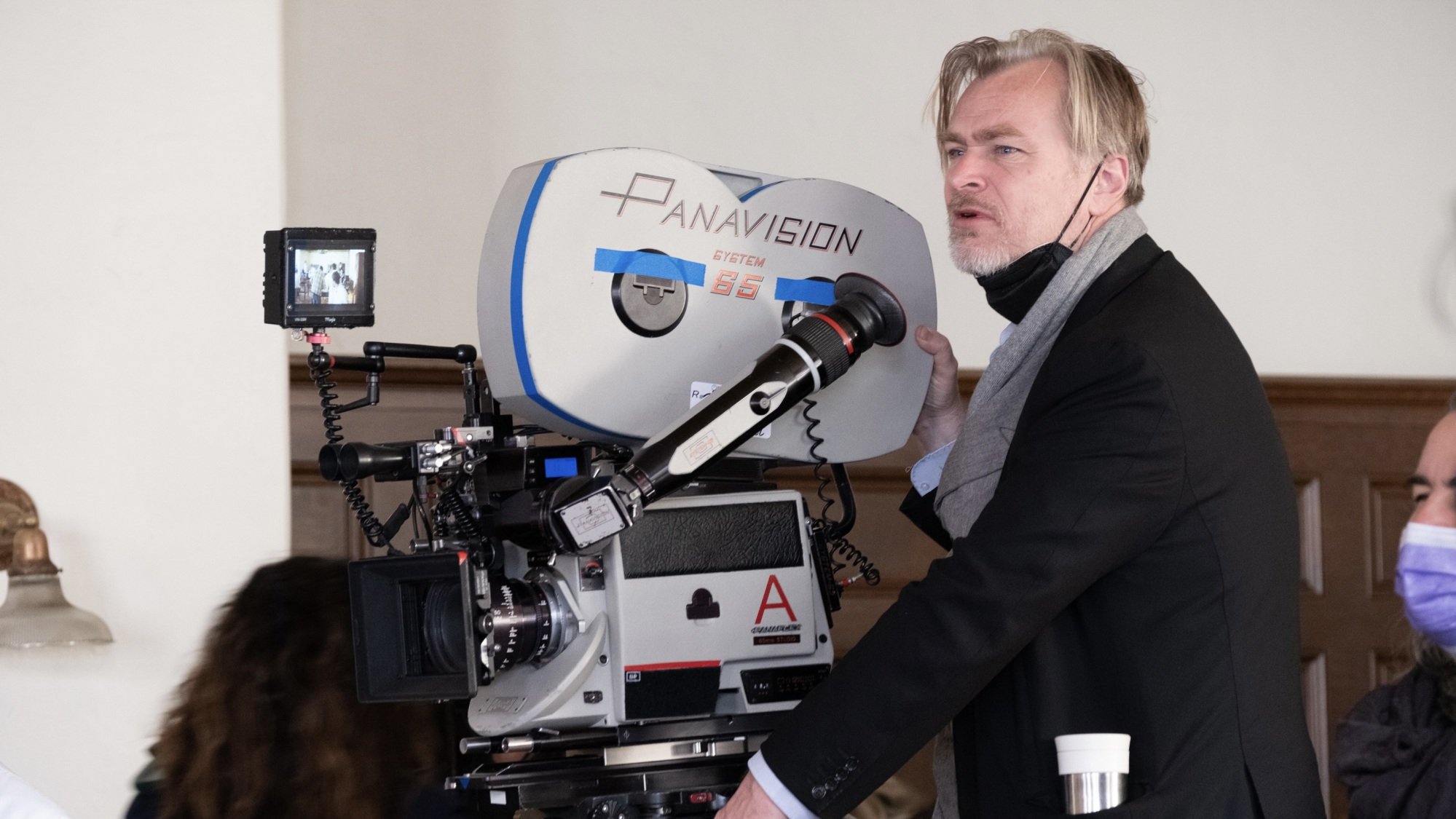
When I think of modern-day science-fiction auteurs, I think of two names: Nolan and Villeneuve. The two have certainly worked outside the genre, producing thrillers like Memento and Sicario, respectively. However, some of their most acclaimed work — think Inception and Arrival — is undeniably sci-fi.
Their takes on the genre are thematically and stylistically similar to one another, often leaning on cerebral, high-concept world-building to make sense of dense source material. Dune and Oppenheimer are both based on hefty tomes, the former on Frank Herbert’s 1965 novel, the latter on Kai Bird and Martin J. Sherwin’s American Prometheus: The Triumph and Tragedy of J. Robert Oppenheimer. To bring these stories to life, Nolan and Villeneuve both rely heavily on practical effects (Nolan more so than Villeneuve), as well as throbbing soundscapes and scores that demand to be experienced in a theater. Notably, both Dune: Part Two and Oppenheimer were shot with IMAX cameras — Dune: Part Two in its entirety, and Oppenheimer for select sequences.
Nolan and Villeneuve’s works have also weathered similar critiques. Even though they tend to have intense emotional cores, such as Arrival‘s mother-daughter relationship or Interstellar‘s assertion that love can transcend space and time, they face the common criticism of being cool and emotionless. This extends to Dune and Oppenheimer‘s leading men: Both Paul Atreides (Timothée Chalamet) and J. Robert Oppenheimer (Cillian Murphy) tend to be more emotionally buttoned-up, although they certainly lose composure in key moments.
Dune and Oppenheimer unleash the power of blue eyes.

Speaking of Dune and Oppenheimer‘s leading men, let’s talk about some of their most defining features. Between Murphy and Chalamet, these movies may as well be called Cheekbones, but it’s their eyes that draw the most focus — especially in this “buy them brown contacts” summer.
We spend much of Oppenheimer lost in Murphy’s blue eyes, his thousand-yard stare in the face of his creation boring holes into the audience. (Nolan mentioned casting Murphy in part because of a photo of Oppenheimer’s “light blue-eyed stare.”) But the blue doesn’t end with Murphy! Between Matt Damon, Emily Blunt, Dane DeHaan, Benny Safdie, and more, Oppenheimer is a parade of blue-eyed actors. You may not have noticed just how blue their eyes were until now, but once an IMAX camera is right in their face, it becomes pretty difficult to ignore.
The same goes for Dune, where blue eyes aren’t just part of an actor’s face — they’re plot-relevant parts of an actor’s face! In the world of Dune, there exists a drug known as spice, which enables faster-than-light travel. Only found on the planet Arrakis, spice turns the eyes of people exposed to it bright blue. All of the Fremen, the indigenous population of Arrakis, have these blue-in-blue eyes (also called the Eyes of Ibad). When we pick back up with Paul and his mother, the Lady Jessica (Rebecca Ferguson), in Dune: Part Two, they will have spent enough time in the deserts of Arrakis to also have the blue-in-blue eyes. (But can they measure up to Murphy’s?)
Oppenheimer and Dune feature chilling visions of death and destruction.
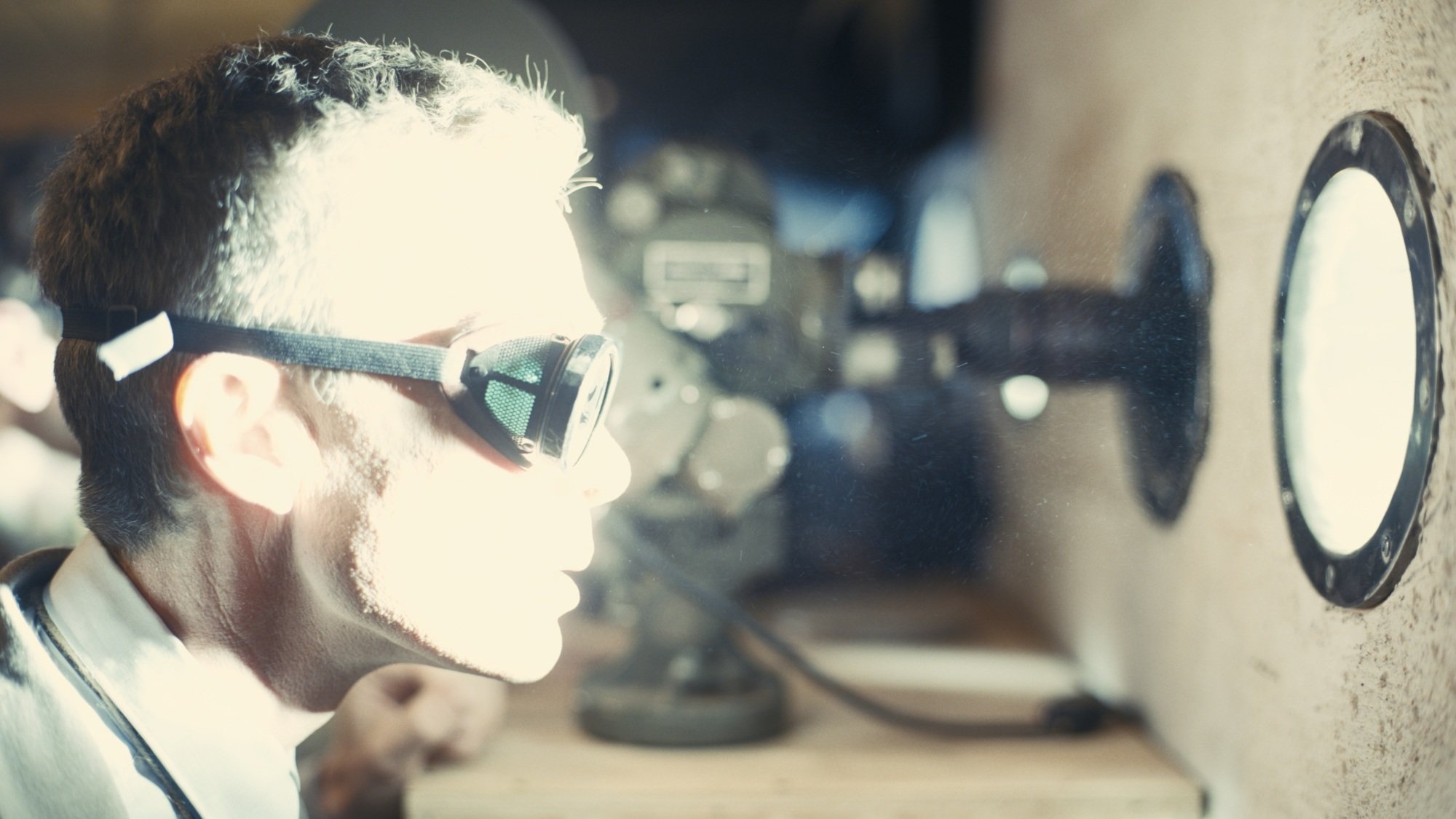
As Paul makes his way into the deserts of Arrakis and as Oppenheimer works to finish the atomic bomb, the two begin to have visions of a terrifying future. Well, Paul’s are actual visions as he sees time unfurl before him, whereas Oppenheimer is more so confronting the worst case scenario of his actions. Either way, they speak of grave consequences for humanity.
In Paul’s case, he witnesses the spread of a holy war carried out across the universe under the Atreides banner. (The novels explicitly refer to the war as a jihad.) He panics at the thought of all this destruction carried out in his name, yet as his influence grows over the Fremen, he realizes there’s less of a chance of him stopping it.
Somewhat similarly, Oppenheimer imagines a future where the spread of nuclear weapons results in worldwide catastrophe. The Trinity Test may not have triggered a literal chain reaction that destroyed the world, but as he tells Albert Einstein (Tom Conti) in the film’s final scene, he fears that the Manhattan Project may have set off a figurative chain reaction anyway, as nations across the globe seek to create more and more destructive nuclear weapons. For both Paul and Oppenheimer, their horrifying futures remind us that neither men are heroes; rather, they are men with great power whose actions will lead to violence they failed to anticipate or completely consider.
Both Dune and Oppenheimer feature troubling erasures of people of color.
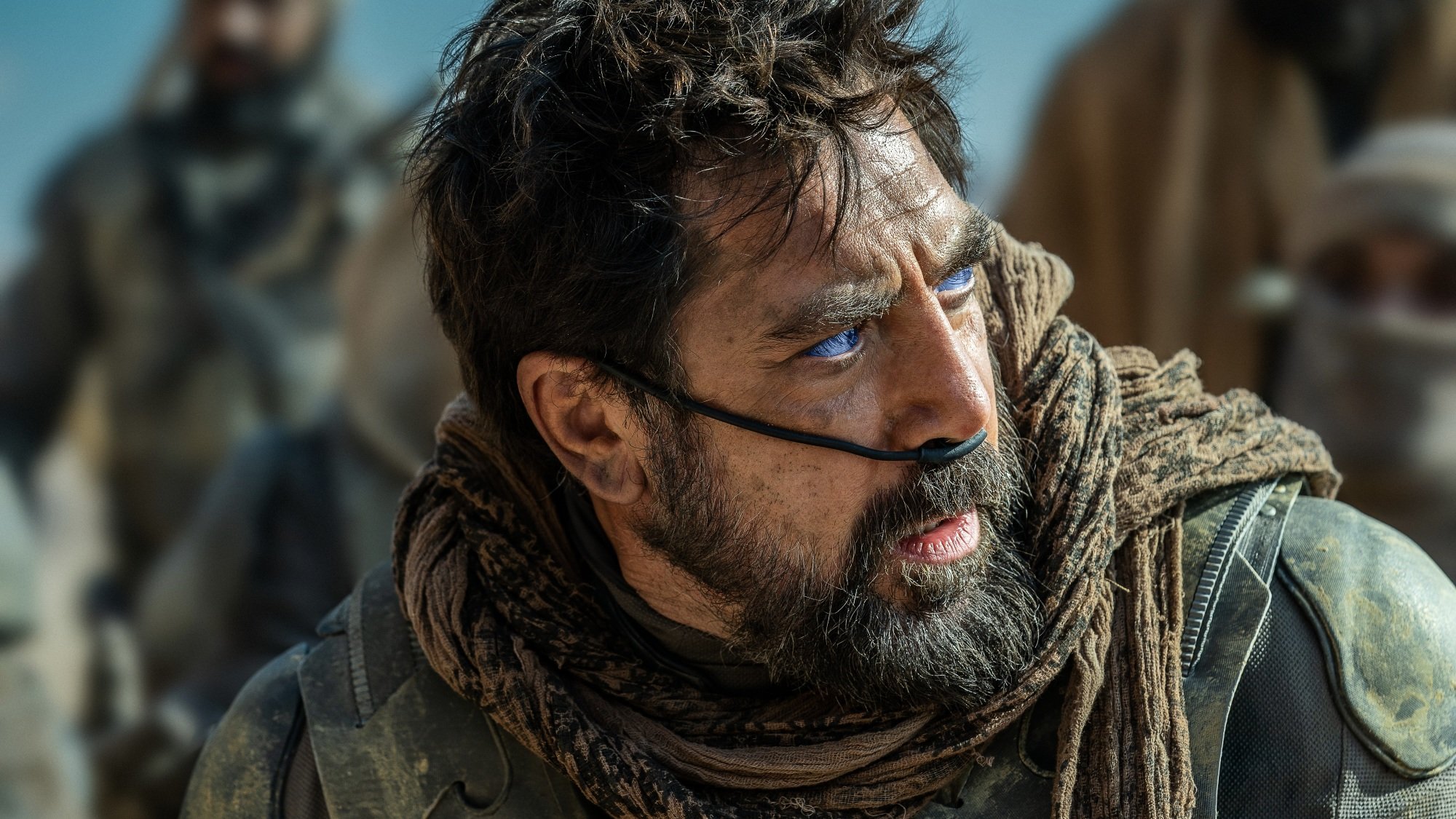
As much as I adore Dune and Oppenheimer, the two face similar issues in terms of how they deal with the people of color at the heart of their stories — people who often play a key role in or bear the brunt of their protagonists’ destructive power.
Herbert’s Dune draws heavily — and explicitly — on Middle Eastern and North African (MENA) culture and Islam, incorporating terms such as “Mahdi,” “Padishah,” and “jihad.” The familiarity of these terms allows us to envision how Arabic and Islam have persisted over the thousands of years between our present and Dune‘s future, becoming especially vital to Fremen culture. Yet Villeneuve’s Dune does not feature any MENA actors in Fremen roles. It also flattens many of Herbert’s MENA influences, omitting terms like “jihad” and other Arabic influences on the Fremen’s language. As Vulture‘s Roxana Hadadi writes, “In subtle but significant ways, [Dune] Part One denies the cultures that are so integral to its source material.”
In Oppenheimer, the erasures are many. In a predominantly white cast, there is no mention of the Black chemists and physicists who worked on the Manhattan Project. Nor is there much discussion of the Native American and Hispanic inhabitants of New Mexico whose land was seized to build the Los Alamos lab. Contamination from the Trinity Test would lead “Downwinders,” New Mexico inhabitants in the area, to suffer from increased rates of cancer.
Notably, Oppenheimer also omits any direct visuals from the U.S.’s use of the atomic bomb on Hiroshima and Nagasaki, leaving the devastation of the atomic bomb up to Oppenheimer’s tortured imagination. The omission is certainly purposeful: Oppenheimer spends so much time hammering home its lead’s preoccupation with theory to the point that even his bomb’s victims become theoretical. When finally confronted with a slideshow of the bomb’s destruction, Oppenheimer turns away, with Nolan himself refusing to make a spectacle of the bombings themselves. It’s an effective yet unsettling choice, one that understandably raises concerns about how the film chooses to deny Oppenheimer and the Manhattan Project’s victims any voice.
The rise of Florence Pugh continues.
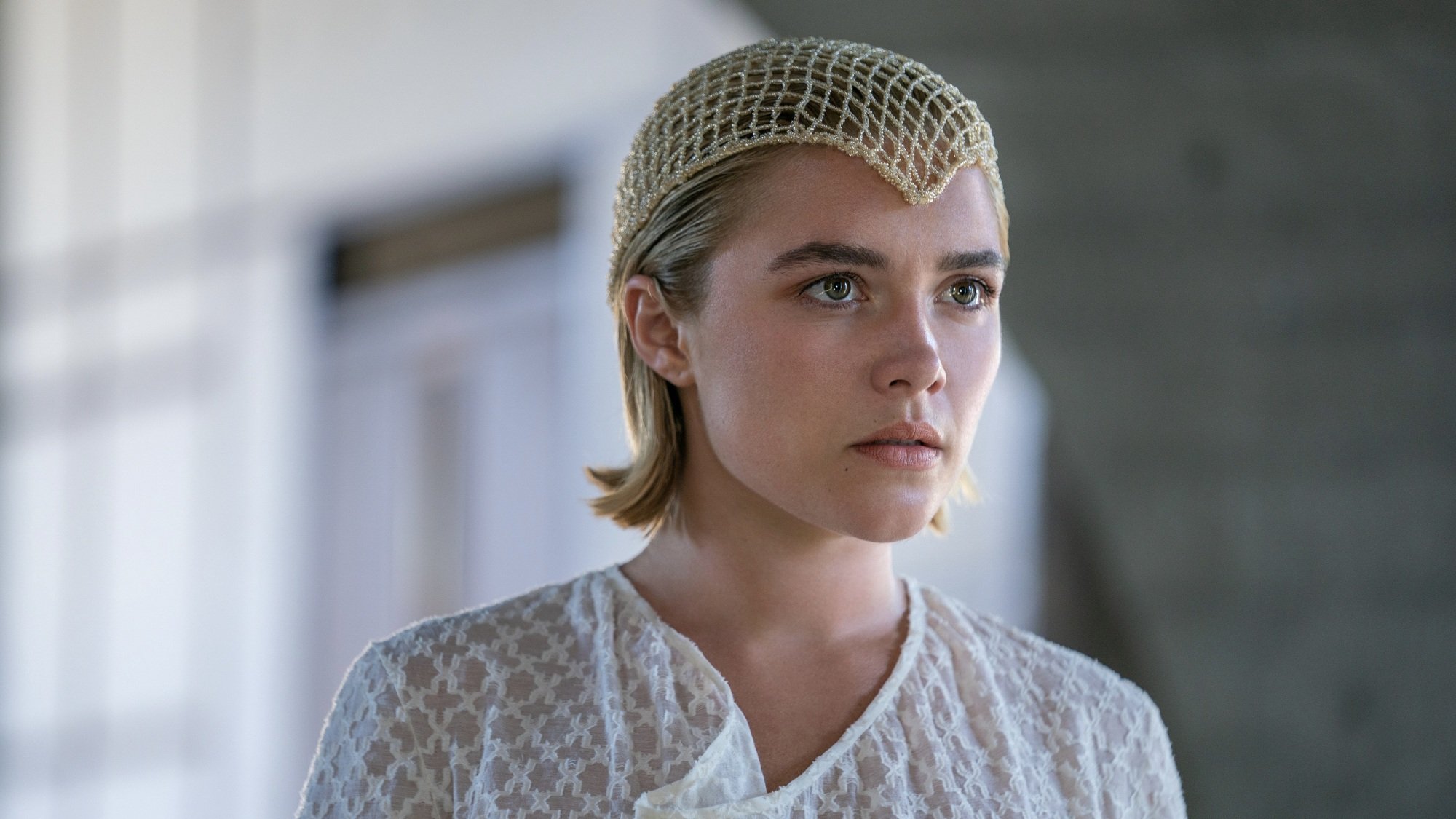
Let’s end our voyage into the similar worlds of Dune and Oppenheimer with a celebration of their shared cast member: Florence Pugh. The Academy Award nominee continues to take the world by storm, appearing in Oppenheimer as Jean Tatlock and in the upcoming Dune: Part Two as Princess Irulan.
As great as Pugh is, her role in Oppenheimer is unfortunately limited to some bizarre sex scenes and relationship angst between her and Oppenheimer. Dune: Part Two will hopefully give her more to do as Princess Irulan, the daughter of the Padishah Emperor (Christopher Walken) who will go on to (spoiler alert) marry Paul. A scholar trained in the Bene Gesserit way, Irulan proves key in the political games Paul will learn to play — especially in Herbert’s second Dune novel, Dune Messiah.
I don’t particularly love that Pugh plays one of two women vying for a man’s attention in both Oppenheimer and Dune (to call these relationships “love triangles” would not be correct), but I do love to see her working with two major directors whose films I admire. Any double feature should be honored to have Pugh as the glue holding it together, and Duneheimer is certainly no exception.
